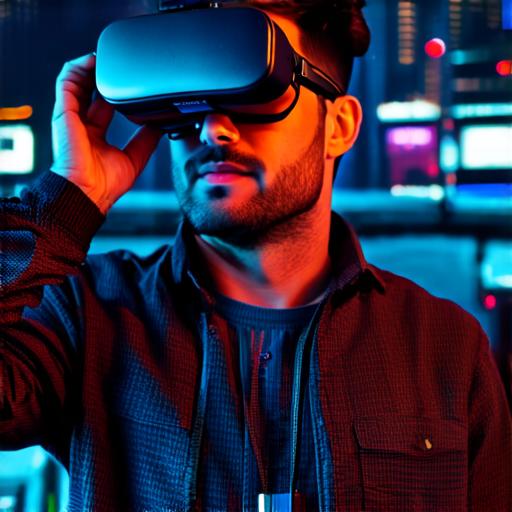In recent years, virtual reality technology has come a long way, thanks to advancements in hardware and software. One of the key milestones in modern VR was the release of the Oculus Rift in 2016. The Rift is a powerful VR headset that allows users to experience fully immersive virtual environments.
Since the release of the Rift, there has been a surge in interest in virtual reality technology, with many companies and individuals exploring its potential applications in fields such as gaming, education, and training.
One of the most exciting recent developments in VR is the emergence of standalone VR headsets, such as the Oculus Quest 2, which allows users to experience virtual reality without the need for a high-powered computer or complicated setup.
The Future of Virtual Reality

As virtual reality technology continues to evolve, it’s likely that we will see even more exciting applications and advancements in this field. One area where VR is particularly well-suited is in the realm of education and training. By providing students with fully immersive virtual environments, educators can help them learn and practice new skills in a safe and controlled environment.
Another area where VR is likely to have a significant impact is in the field of healthcare. Virtual reality technology can be used to simulate medical procedures, allowing doctors and nurses to practice and perfect their techniques before performing them on actual patients. This could help reduce errors and improve patient outcomes.
Comparing VR to Other Technologies
It’s worth comparing virtual reality technology to other forms of immersive media, such as film and video games. While these technologies can provide users with a sense of immersion, they are limited in their ability to truly transport the user into another world. Virtual reality, on the other hand, allows users to experience a fully immersive environment that is indistinguishable from reality.
One of the key advantages of virtual reality over other forms of media is its ability to provide users with a sense of presence and agency. In a virtual environment, users can interact with objects and perform actions in a way that feels natural and intuitive. This makes VR an ideal platform for exploring new concepts and ideas, as well as for training and simulation.
FAQs
What is virtual reality technology?
Virtual reality (VR) is a technology that allows users to experience a computer-generated environment as if they were physically present in it. The roots of VR can be traced back to the early days of computing, with pioneers such as Ivan Sutherland and Jaron Lanier laying the foundation for this exciting field.
Early Developments in VR
One of the earliest examples of virtual reality can be traced back to 1968, when Ivan Sutherland created “Skybook,” a system that allowed users to navigate through a three-dimensional world using a head-mounted display. This early VR system was limited in its capabilities, but it laid the groundwork for future developments in this field.
Another pioneer of virtual reality was Jaron Lanier, who developed “VPL,” or Virtual Programming Language, in the 1980s. VPL allowed users to create their own virtual environments and experiences, paving the way for more advanced VR systems in the future.
The Rise of Modern VR
In recent years, virtual reality technology has come a long way, thanks to advancements in hardware and software. One of the key milestones in modern VR was the release of the Oculus Rift in 2016. The Rift is a powerful VR headset that allows users to experience fully immersive virtual environments.
Since the release of the Rift, there has been a surge in interest in virtual reality technology, with many companies and individuals exploring its potential applications in fields such as gaming, education, and training. One of the most exciting recent developments in VR is the emergence of standalone VR headsets, such as the Oculus Quest 2, which allows users to experience virtual reality without the need for a high-powered computer or complicated setup.
The Future of Virtual Reality
As virtual reality technology continues to evolve, it’s likely that we will see even more exciting applications and advancements in this field. One area where VR is particularly well-suited is in the realm of education and training. By providing students with fully immersive virtual environments, educators can help them learn and practice new skills in a safe and controlled environment.
Another area where VR is likely to have a significant impact is in the field of healthcare. Virtual reality technology can be used to simulate medical procedures, allowing doctors and nurses to practice and perfect their techniques before performing them on actual patients. This could help reduce errors and improve patient outcomes.
Comparing VR to Other Technologies
It’s worth comparing virtual reality technology to other forms of immersive media, such as film and video games. While these technologies can provide users with a sense of immersion, they are limited in their ability to truly transport the user into another world. Virtual reality, on the other hand, allows users to experience a fully immersive environment that is indistinguishable from reality.
One of the key advantages of virtual reality over other forms of media is its ability to provide users with a sense of presence and agency. In a virtual environment, users can interact with objects and perform actions in a way that feels natural and intuitive. This makes VR an ideal platform for exploring new concepts and ideas, as well as for training and simulation.
